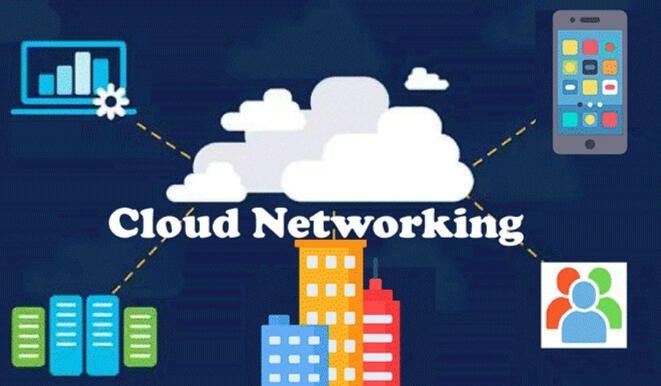What is Cloud Managed WiFi? Explained Simply
In the ever-evolving technology landscape, one term that has gained significant traction in recent years is "Cloud-Managed WiFi."
But what exactly does this term mean, and how does it impact how we connect to the internet?
Let's delve into the world of Cloud Managed WiFi and explore its simplicity and significance.
What is Cloud Managed WiFi

Cloud-managed WiFi refers to a modern approach to managing and controlling WiFi networks using cloud-based technology and infrastructure.
In traditional WiFi setups, managing network equipment such as access points (APs) and routers typically involves on-premises hardware and software.
However, Cloud-Managed WiFi shifts this paradigm by centralizing network management tasks in the cloud.
This means that instead of relying on physical access to network devices, administrators can remotely configure, monitor, and troubleshoot WiFi networks from a centralized cloud-based interface.
Access points or wireless routers are deployed at various locations to provide WiFi coverage in a cloud-managed WiFi setup.
These devices are connected to the internet and configured to communicate with a cloud-based management platform.
Through this platform, administrators can easily configure WiFi settings, such as SSIDs (Service Set Identifiers) and security protocols, monitor network performance in real-time, and receive alerts for any network issues.
Cloud Managed WiFi offers several benefits, including scalability, flexibility, centralized management, enhanced security, and cost efficiency.
Overall, it provides a streamlined and efficient solution for managing WiFi networks in modern environments, allowing organizations to adapt to changing demands and ensure optimal connectivity for their users.
How Does It Work?

Access points (APs) or wireless routers are deployed at various locations to provide WiFi coverage in a cloud-managed WiFi setup.
These devices are then connected to the internet and configured to communicate with a cloud-based management platform.
This platform is a centralized hub for configuring, monitoring, and troubleshooting the WiFi network.
IT administrators can remotely configure WiFi settings, such as SSIDs (Service Set Identifiers), security protocols, and guest access policies through the cloud management interface.
They can also monitor network performance in real time, view usage statistics, and receive alerts for network issues.
Additionally, cloud-based firmware updates ensure that devices always run the latest software version, enhancing security and reliability.
Benefits of Cloud-Managed WiFi
Scalability:
Cloud Managed WiFi offers unparalleled scalability, allowing organizations to easily expand or shrink their WiFi networks based on changing requirements.
With traditional on-premises solutions, scaling up often involves costly hardware upgrades and complex configurations.
In contrast, Cloud Managed WiFi enables businesses to add new access points or features with minimal effort.
This flexibility ensures that WiFi networks can grow alongside the organization without incurring substantial infrastructure costs.
Flexibility:
One of the key advantages of Cloud Managed WiFi is its flexibility in network management. IT administrators can manage WiFi networks from anywhere with an internet connection, eliminating the constraints of physical presence on-site.
This remote accessibility benefits organizations with distributed locations or remote workers.
Whether configuring settings, monitoring performance, or troubleshooting issues, the cloud-based management interface provides the flexibility to manage WiFi networks across various locations efficiently.
Centralized Management:
Cloud Managed WiFi centralizes network management tasks in a single, cloud-based interface, simplifying administration and reducing operational overhead.
IT administrators can configure, monitor, and troubleshoot WiFi networks from a centralized dashboard, streamlining day-to-day operations.
This centralized management approach enhances efficiency and productivity by eliminating the need to navigate through multiple management tools or interfaces.
Enhanced Security:
Security is a top priority for any WiFi network. Cloud Managed WiFi offers robust security features to protect against potential threats.
Administrators can implement granular security measures such as role-based access control, encryption protocols, and firewall policies to safeguard sensitive data.
Additionally, centralized control over network policies and access permissions ensures consistent security enforcement across the entire network infrastructure, reducing the risk of breaches or unauthorized access.
Cost Efficiency:
Cloud Managed WiFi offers cost efficiency by reducing capital expenses associated with on-premises hardware and infrastructure.
With traditional WiFi deployments, organizations often face upfront costs for purchasing and maintaining hardware and ongoing upgrades and maintenance expenses.
Cloud Managed WiFi operates on a pay-as-you-go model, allowing organizations to scale resources according to their needs without incurring unnecessary costs.
This cost-effective approach enables businesses to allocate resources more efficiently and invest in other areas of their operations.
Real-time Monitoring:
Cloud Managed WiFi provides real-time monitoring capabilities, allowing administrators to track network performance and detect issues as they arise.
IT teams can access comprehensive data on network usage, bandwidth utilization, and device connectivity through the cloud-based management interface.
Additionally, automated alerts and notifications enable proactive troubleshooting, minimizing downtime, and optimizing network resources. Real-time monitoring enhances network reliability and ensures a seamless user experience for employees and customers.
High Availability:
Cloud Managed WiFi ensures high availability and reliability by leveraging redundant data centers and failover mechanisms.
Unlike traditional on-premises solutions, which may be vulnerable to hardware failures or outages, Cloud Managed WiFi offers built-in redundancy to minimize downtime and service interruptions.
This high availability architecture ensures that WiFi networks remain operational even during a localized failure or disruption, providing uninterrupted connectivity for critical business operations.
Integration with Other Cloud Services:
Cloud Managed WiFi seamlessly integrates with other cloud-based services and applications, enhancing productivity and collaboration across the organization.
Whether integrating with cloud-based productivity suites, communication tools, or business applications, Cloud-Managed WiFi enables interoperability with existing cloud ecosystems.
This integration simplifies workflows, improves efficiency, and enables organizations to leverage the full potential of cloud technology to drive innovation and growth.
Conclusion
In summary, Cloud Managed WiFi represents a paradigm shift in managing and operating WiFi networks.
By leveraging cloud-based infrastructure and management tools, organizations can achieve greater scalability, flexibility, and security in their WiFi deployments.
Whether optimizing network performance, enhancing user experience, or simplifying network management, Cloud Managed WiFi offers a streamlined and efficient solution for modern connectivity needs.